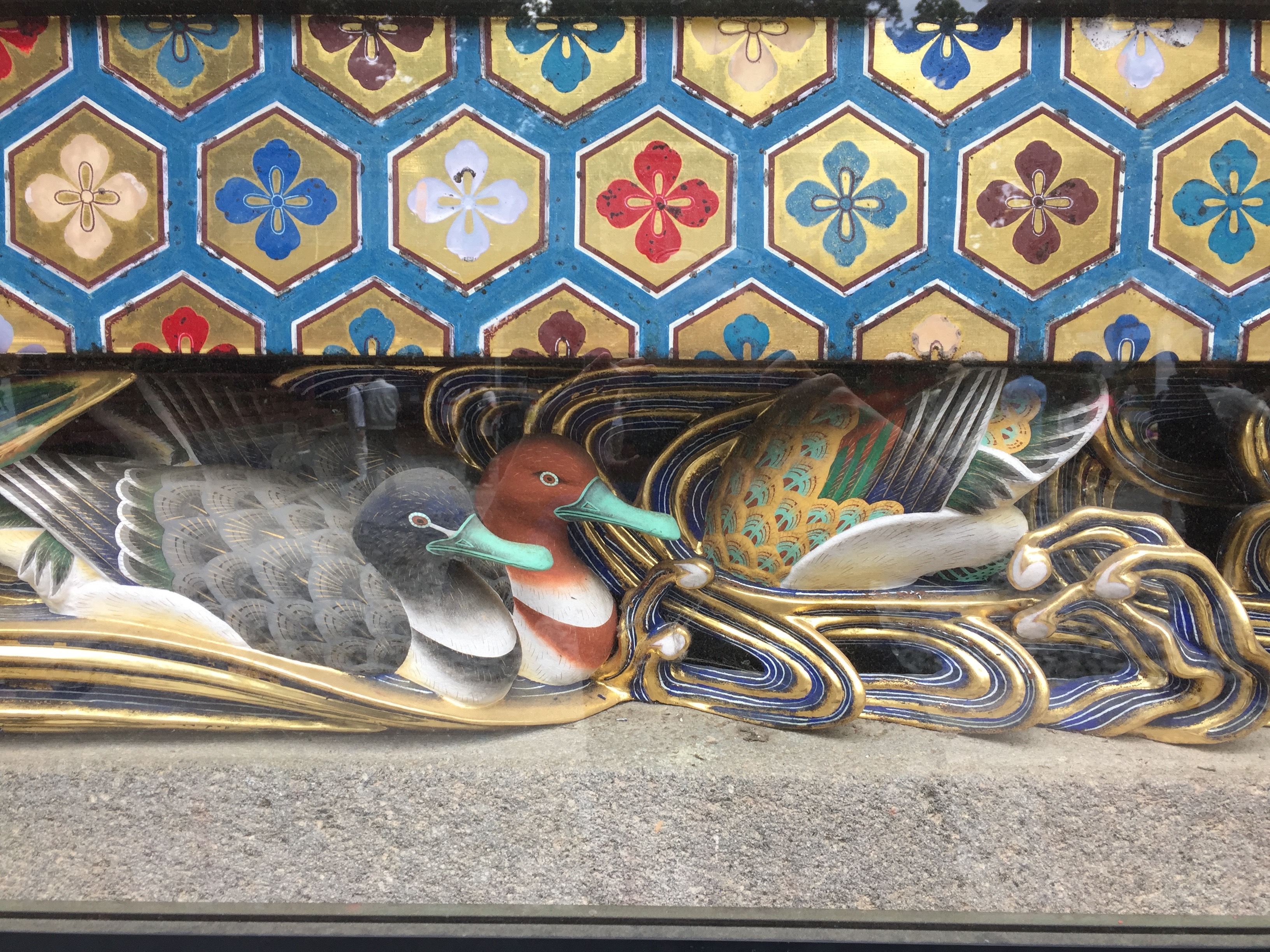While we were in the process of composing the preceding entry (“Sanchōden: The Transmission of the Three Birds”) we had occasion to consult with a correspondent presently located in Nikkō, Japan. She had become interested in the recurrent bird imagery on the third ring of walls surrounding Nikkō’s Tōshōgu temple complex, which enshrines the founding father of the Tokugawa shogunate.

The decorations on this ring of walls are composed of colorful vignettes of two birds or three, of a variety of species, possibly bearing some symbolism but on the whole – in line with the rest of the Tōshōgu complex – existing to display ornate artistry and opulence, and implicitly questioning the extent to which it is possible to torque, torture and exalt matter to proclaim, reflect and supplement the glory of a given being.
Our correspondent highlights two adjacent and very curious vignettes (reproduced here as photographed by her). The first features three ducks, one of which has slipped underwater – a common enough motif that might easily evoke to Birdish sensibilities a propensity to dip below the surface of things in pursuit of some elusive aesthesis.
In the second, the two birds that were on the water’s surface are now in flight, and the third is nowhere to be seen. This third is betrayed only by the roiling of the water, and by the gap where it should be, and is not.
The pursuit of meaning here, if meaning is to be pursued, must be something like following along the length of a single filament of spider silk – invisible to the naked eye and almost impalpable, though surprisingly robust.
As the poet Kakiaji no Seiei famously observed, if only one thread in a bolt of white cloth is blue, anyone might, upon close observation, discern it – but only a poet sees that the cloth yearns to be blue.
The craftsman of these bird vignettes at Tōshōgu – if indeed he was a conscientious adept of an Order resembling that of the present day (in Japan or elsewhere) in its sensibilities and purposes – would have been certain, here, to disguise his profession of faith and fealty as a mere absence. In so doing, he made this absence an unmistakable emblem of the very thing he had so carefully omitted.
For the third bird is in fact not there. In order to pursue it and reveal its presence, one would have literally to dive below the surface of this image, or below the surface of the matter that composes this work – which of course, save for the very particular circumstances of an Action of the Order, is quite impossible.

